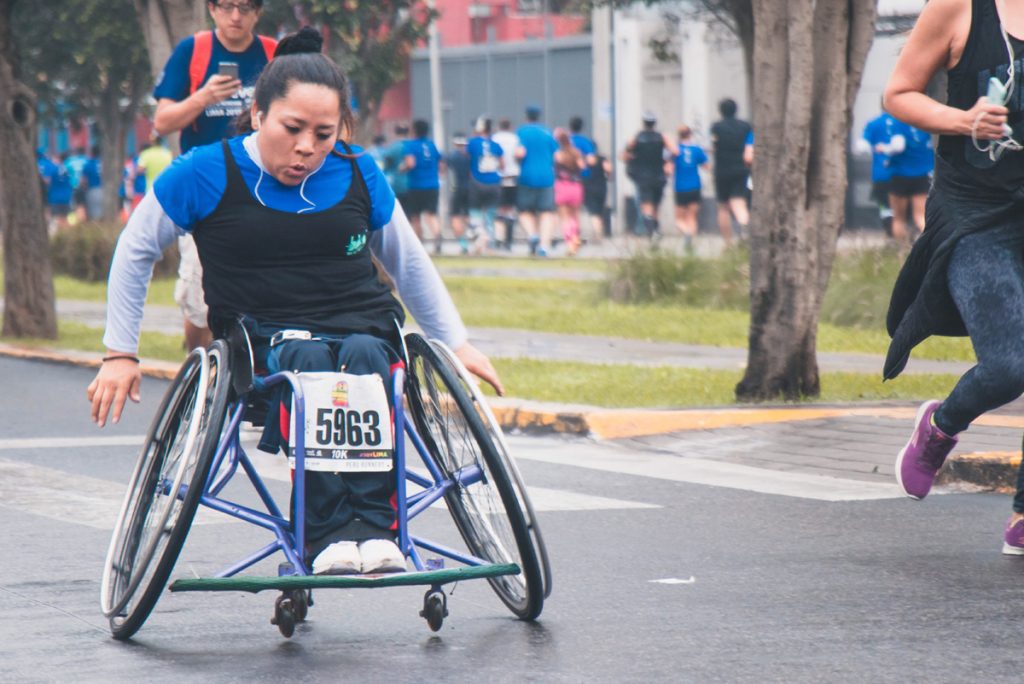People are not “confined” to their wheelchairs — they are in fact liberated by their wheels, but choosing a wheelchair can be harder than choosing a car – there are just so many options and variations out there! If you are new to this subject, we have put together a very simple guide to take you through some of the fundamentals.
First up, It is important that you keep in mind the special needs required for the user or you could end up with something that doesn’t work for you/them.
AND
We HIGHLY recommend consulting with the experts (an Occupational Therapist – or OT – is a great start) to ensure your selection is going to work for the longer term, but we hope you find some useful info in the basics we’ve put together.
Many people choose their first chair because it was the one the insurance company or their NDIS Plan was willing to pay for. The second one, though, is often selected because of styling, performance, the identification of other specific needs, preferences or features.
Looking at a Manual Wheelchair?
There’s some specifics you might be interested in …

A manual wheelchair is generally used by those with upper body strength and is of course propelled by pushing the arms forward as the hands grab the wheel rims, and can also be lever drive (more on that shortly).
Manual chairs have changed dramatically in the last decade or two with huge reductions in weight and the plethora of colours, designs, materials, aftermarket products and the like now available.
Aside from the rest, there’s some key things worth looking at when hunting for a manual chair:
- Is the frame rigid or does it fold?
Generally speaking, a rigid frame (one that does not fold up) transfers more of the rider’s energy into the forward motion than does a folding unit. The primary advantage of a folding chair, however, is portability; some folding units can even fit in the overhead bin of an airplane. - What type of propulsion do I prefer?
There are actually alternatives to the standard rim-pushing manual chair, with a couple of lever-driven chairs on the market, both touting that shoulders don’t get damaged the way they can with standard rim pushing:
The Pivot Dual Lever Drive:
[yotuwp type=”videos” id=”K0U6Bq2PixU” ]And…The Wijit Wheelchair:
[yotuwp type=”videos” id=”491qe2pCr2c” ]
There are other options, but please request details from your OT according to your needs.
- Weight
If you’re folding and lifting your chair, you’ll want a lighter wheelchair than if your needs see you better in a rigid, easier to propel chair. Consider your needs, but note that chairs can range in weight dramatically depending on many factors including material, build-style and more.
Perhaps a Power chair is what you require?
Again, there’s much to consider here, but let’s look at some basics …

A person who can’t push (or use lever driven chairs) may require a wheelchair powered by an electric motor and batteries and is controlled by a joystick.
In recent years, changes to Power Chairs have been as extensive as their cousin the Manual chair, with options now available to suit almost every single user … There are rugged and off-road ready models; there are models that fold for travel; there are power chairs that can be customized for the most complex needs of people with paralysis. The right choice for each user is based on much more than style.
These are serious pieces of equipment and Getting a power chair fitted and configured to one’s needs requires expert help. Discuss your needs with your OT or even get in touch with NDIA directly to find the resources you need.
One simple consideration that might come into play is where on your chair the driving-wheels live, as most power chairs have rear-wheel drive, but mid-wheel and front-wheel drives that are nimble in tight spaces have more recently grabbed a share of the market.
You might consider a mid or front-wheel drive wheelchair if your neighbourhood has narrow pathways or your home some tight spaces.
Beyond that, there is a plethora of battery setups and seating/positioning options that can be combined to create a wheelchair that is perfectly suited to the user.
Pimp my chair!
Yes, there are plenty of aftermarket options for your wheelchair needs, from adapters that make a manual chair a power-assisted chair, through to heavy duty suspension.
[yotuwp type=”videos” id=”Uspd92VgDsY” ]
What else?
Well, there are specialty wheelchairs available built for playing different sports, beach use, negotiating rough terrain and almost any other purpose you can imagine. Some of these are modified versions of the above and others are completely different beasts altogether… there’s some fun to be had looking at what’s around…
If you’re an NDIS Participant with an NDIS Plan or are yet to have your Plan approved, you might benefit from having a read of the “Replacing Assistive Technology” page on the NDIS website:
NDSP is a NDIS registered provider specialising in NDIS Plan Management. If you are a NDIS Participant looking for the right Plan Manager, CLICK HERE to get in touch with our friendly team today.






